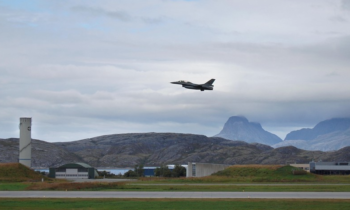 When the ready-room alarm went off—high-low, high-low—two Norwegian Air Force pilots pulled on cold-water survival gear, grabbed their flight bags, and sprinted through swirling snow to their hangars. Their decades-old F-16 fighter jets roared to life, and as the airport snowplow halted to let them pass, the jets taxied to the runway and lit the afterburners. The training run took less than 10 minutes.
When the ready-room alarm went off—high-low, high-low—two Norwegian Air Force pilots pulled on cold-water survival gear, grabbed their flight bags, and sprinted through swirling snow to their hangars. Their decades-old F-16 fighter jets roared to life, and as the airport snowplow halted to let them pass, the jets taxied to the runway and lit the afterburners. The training run took less than 10 minutes.
Norway has long kept two jets on round-the-clock alert at this Arctic base, allowing NATO to put eyes on the Russian warplanes that round the North Cape and head southwest. And while Moscow’s new assertiveness has Oslo preparing additional military units to react more quickly, defense officials here are also looking with concern toward Washington, where the incoming Trump administration has yet to articulate an unambiguous transatlantic security policy.
“Concerned” is a word we heard a lot last week, traveling with defense officials from Norway’s Ministry of Defense in Oslo to this coastal base 50 miles above the Arctic Circle, and beyond. I was part of a group of Americans—analysts, former diplomats, and national-security officials—brought here on a trip organized by the Atlantic Council, a NATO-oriented think tank in Washington, and sponsored by the Norwegian government.
Norwegian defense officials spoke carefully about their changing situation. “The Baltic countries feel threatened; we don’t feel threatened, but we see the potential,” one said.
But they are concerned. The Russian ships, submarines, and aircraft that sortie westward from Murmansk and nearby airbases have been coming more frequently. It’s been happening for a while; the first big jump came in 2007, when the number of Russian warplanes intercepted off Norway’s coast increased fivefold. The operations are also growing more sophisticated; in October, Russian bombers took off from Arctic runways, threaded their way through international airspace near Gibraltar, and struck targets in Syria.
It was 2014’s Crimean invasion that really woke people up, and not just in Norway. Several officials said that NATO had essentially stopped planning for the defense of Europe in the late 1990s, at least at a nuts-and-bolts level. That’s being fixed, but now there is a new concern: A U.S. president who appears to care more about Russia than America’s allies.
In December, Norwegian Prime Minister Erna Solberg visited Donald Trump, then the president-elect, who has alternately called the North Atlantic alliance “obsolete,” suggested that America might ignore its treaty obligations, and mused that perhaps NATO could change its central focus to counterterrorism. Solberg urged Trump to reconsider the alliance’s importance, or at least to set a European policy and stick to it.
Defense officials in Norway explained why. European unity is fragile: While northern and eastern Europe see Russia as the biggest looming problem, southern Europeans are stressed by migration flows from Syria and elsewhere. The populist sentiments that drove Brexit exist elsewhere in NATO. Even in Norway, where a 2011 terrorist attack damaged the prime minister’s office in Oslo, there is little appetite for turning NATO into a primarily counterterror organization.
Europe may roll with the punches, officials said, even if the United States decreases its support. But if the Trump administration cannot describe and commit to a stable position, they said, the extra uncertainty could make it impossible for European leaders to find consensus answers to key questions: What threats they should prioritize? And how much should each nation contribute to the common defense?
Norwegians are encouraged by the selection of James Mattis as U.S. defense secretary. They fought beside him and under his command in Iraq and Afghanistan, developing such expertise in counterterrorism operations, one defense official said, that they knew the names of the principal opium traders in their areas of operations.
Norway has long structured its military to contribute specialized groups of troops and gear to such missions. These deployments, along with operations and training exercises closer to home, are planned and monitored at National Joint Headquarters, an underground fortress sunk deep into a mountain near Bodø. Built in the 1950s and 1960s by extending Wehrmacht tunnels dug during the Nazi occupation, the facility was envisioned as a place where military commanders might survive the nuclear blows of a war with the Soviet Union. In the years after the Berlin Wall fell, its rough-hewn rock walls may have come to seem a bit anachronistic. They feel somewhat less so now.
In the two-story operations center, a column of digital clocks displayed the time in Kabul, Erbil, Juba, Moscow, and Washington, as well as the military-standard Zulu. A smaller screen detailed foreign deployments: On January 19, this country of just over 5 million people had 360 troops participating in a dozen operations in Afghanistan, Iraq, South Sudan, and elsewhere. The duty officers here direct troops at home and abroad, and even place a weekly Skype call to Russia’s Northern Fleet headquarters, an exception to the general radio silence between Western and Russian militaries since 2014.
Up on the giant video wall, a map of Norway showed the locations of military forces in green and blue. (Red squares denoting Russian assets had been scrubbed for our visit.) Even when they are not deployed abroad, Norwegian forces are active across a vast swath of the Arctic, with responsibility for an ocean area nearly as large as the Mediterranean Sea. Much of their training takes place in the same locales they might be called upon to defend.
Among their current concerns is the state of anti-submarine warfare in NATO. Drawn down after the Soviet fleet withered, the alliance’s ASW capability is once again rising to meet a Russian buildup. Like the United States and Britain, Norway is replacing some of its ancient P-3 sub-hunting planes with jet-powered P-8s. But officials here worry that the balance has shifted, and that the alliance might not be able to keep Russia’s quieter, cruise-missile-armed subs from severing the transatlantic resupply line—that is, sinking the ships that would carry U.S. reinforcements to Europe if war broke out. It’s a concern that has grown in importance since the U.S. pulled its large tank garrisons home. Norway wants its alliance partners, at least, to overhaul the ASW command structure and boost its importance.
Back at the Bodø air base, the wind off the Norwegian Sea picked up, grounding the day’s training flights. Hail rattled off dining-hall windows while a few candles burned on side tables, adding their light to a dim January day. Elsewhere on this island, a northern node of NATO’s cyber defense went about its work, its indoor practitioners impervious to the storm outside.
In the next few years, the Norwegian armed forces will spend much of their time and effort preparing to assimilate the new P-8s, along with a handful of new submarines and the 52 F-35A Joint Strike Fighters that represent Norway’s biggest-ever non-energy investment. The military will continue to work on ways to contribute to operations around the world. But they will also, one defense official said, build up stocks of ammunition and spare parts, train to reduce reaction times, and prepare to move quickly if attacked.
They are, he said, concerned.
(theatlantic)


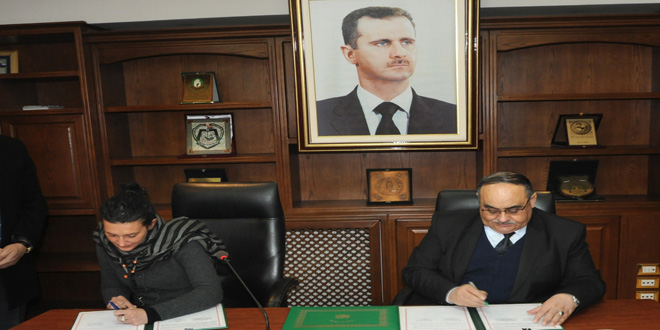
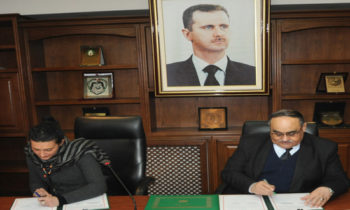
 Syrian Minister of Agriculture and Agrarian Reform Ahmad al-Qadiri signed on Thursday a MoU with the representative of the Norwegian Refugee Council (NRC) Anna Cervi.
Syrian Minister of Agriculture and Agrarian Reform Ahmad al-Qadiri signed on Thursday a MoU with the representative of the Norwegian Refugee Council (NRC) Anna Cervi.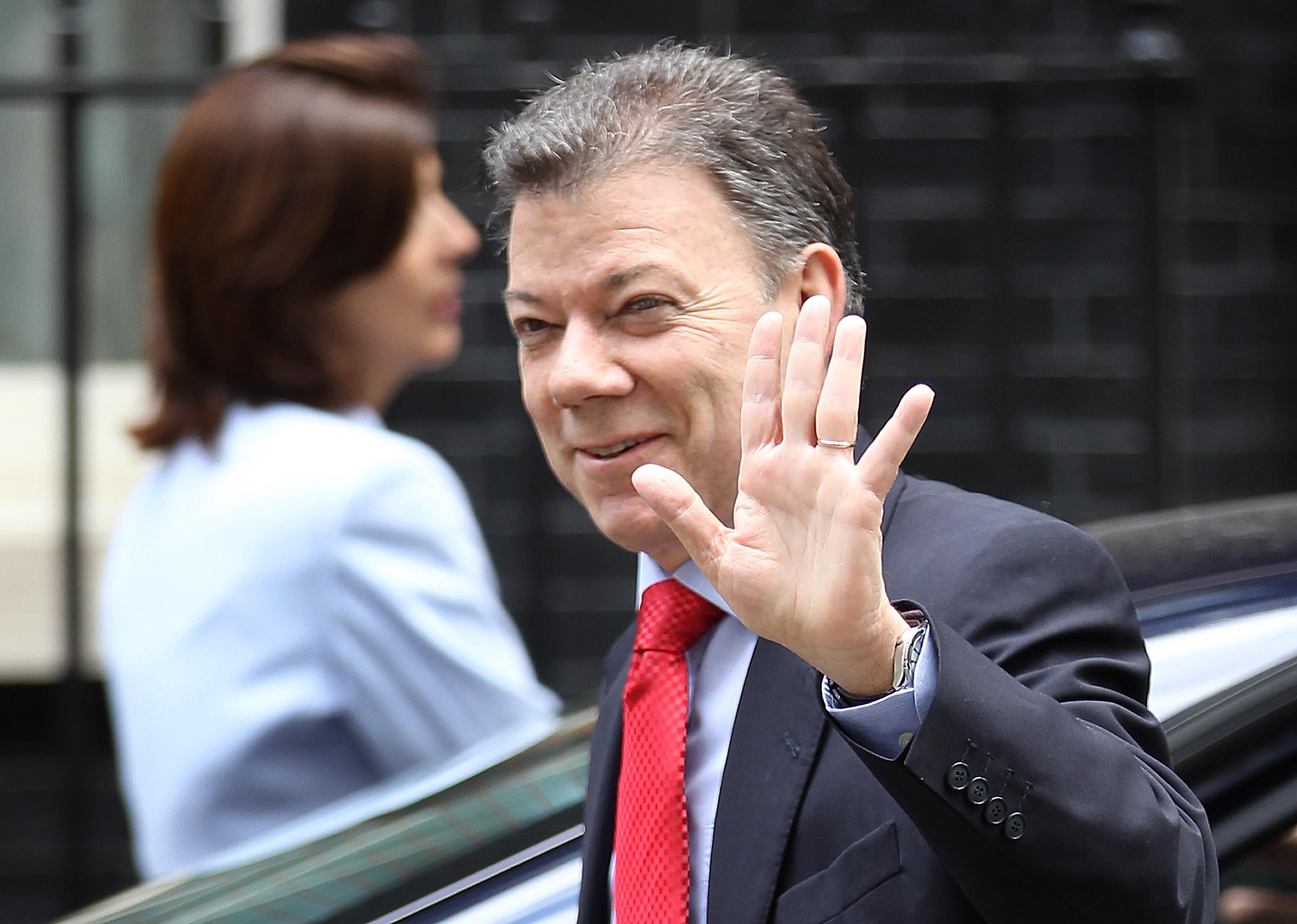
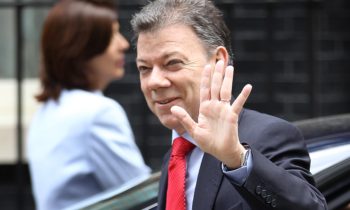

 Turkish authorities are seeking the closure of Kurdish television channels broadcasting in Norway and Sweden, on the grounds that the supposedly incite terrorism, according to an article on the Norwegian Klassekampen website.
Turkish authorities are seeking the closure of Kurdish television channels broadcasting in Norway and Sweden, on the grounds that the supposedly incite terrorism, according to an article on the Norwegian Klassekampen website.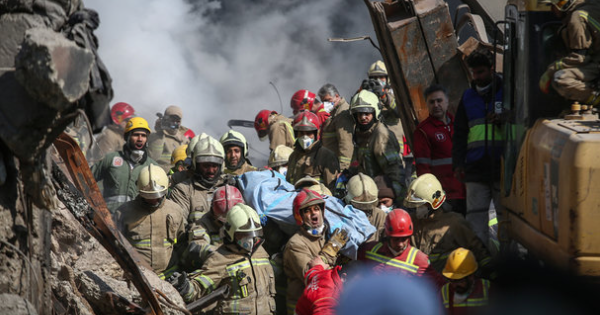
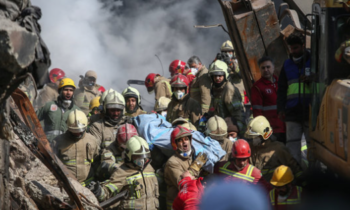 Iran’s embassy in Norway has opened a memorial book on the honor of the firefighters killed during rescue operations in Plasco building last Thursday.
Iran’s embassy in Norway has opened a memorial book on the honor of the firefighters killed during rescue operations in Plasco building last Thursday.
 The European Commission has recommended member states be allowed to temporarily extend border controls already in place in Austria, Germany, Denmark, Sweden, and Norway, an announcement said on Wednesday.
The European Commission has recommended member states be allowed to temporarily extend border controls already in place in Austria, Germany, Denmark, Sweden, and Norway, an announcement said on Wednesday.
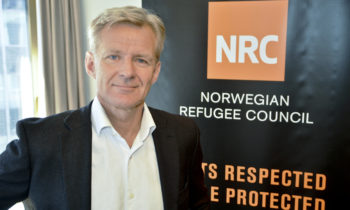 Uganda welcomed more refugees last year than the total number of refugees and migrants crossing the Mediterranean into Europe. “Europe should learn from the way Uganda and other African countries are keeping their borders open as the Refugee Convention prescribes, instead of specializing in barbed wire and walls,” said Secretary General of the Norwegian Refugee Council Jan Egeland.
Uganda welcomed more refugees last year than the total number of refugees and migrants crossing the Mediterranean into Europe. “Europe should learn from the way Uganda and other African countries are keeping their borders open as the Refugee Convention prescribes, instead of specializing in barbed wire and walls,” said Secretary General of the Norwegian Refugee Council Jan Egeland.
 Windows Phones are currently the go-to smartphones for more than 100 Norwegian municipalities, but that may not be the case for much longer. As reported by Digi.no (via MSPU), the municipalities, which initially turned to Windows Phone for its security, are now considering a switch to Android because of the difficulty in finding low-cost replacements for Windows Phones as they wear out.
Windows Phones are currently the go-to smartphones for more than 100 Norwegian municipalities, but that may not be the case for much longer. As reported by Digi.no (via MSPU), the municipalities, which initially turned to Windows Phone for its security, are now considering a switch to Android because of the difficulty in finding low-cost replacements for Windows Phones as they wear out.
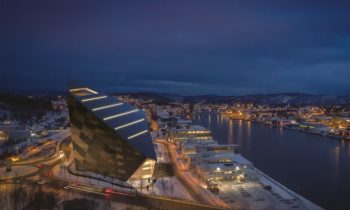 If buildings that meet the rigorous qualifications of passive house construction seem impressive, or projects that attain the Living Building standard, such as the Bullitt Center, represent the cutting edge of sustainable design, a recently announced project in an Oslo suburb could be a game-changer, according to its developer.
If buildings that meet the rigorous qualifications of passive house construction seem impressive, or projects that attain the Living Building standard, such as the Bullitt Center, represent the cutting edge of sustainable design, a recently announced project in an Oslo suburb could be a game-changer, according to its developer.
 A Norwegian bank has proposed a “halal” loan scheme based on Islamic principles which forbid charging interest.
A Norwegian bank has proposed a “halal” loan scheme based on Islamic principles which forbid charging interest.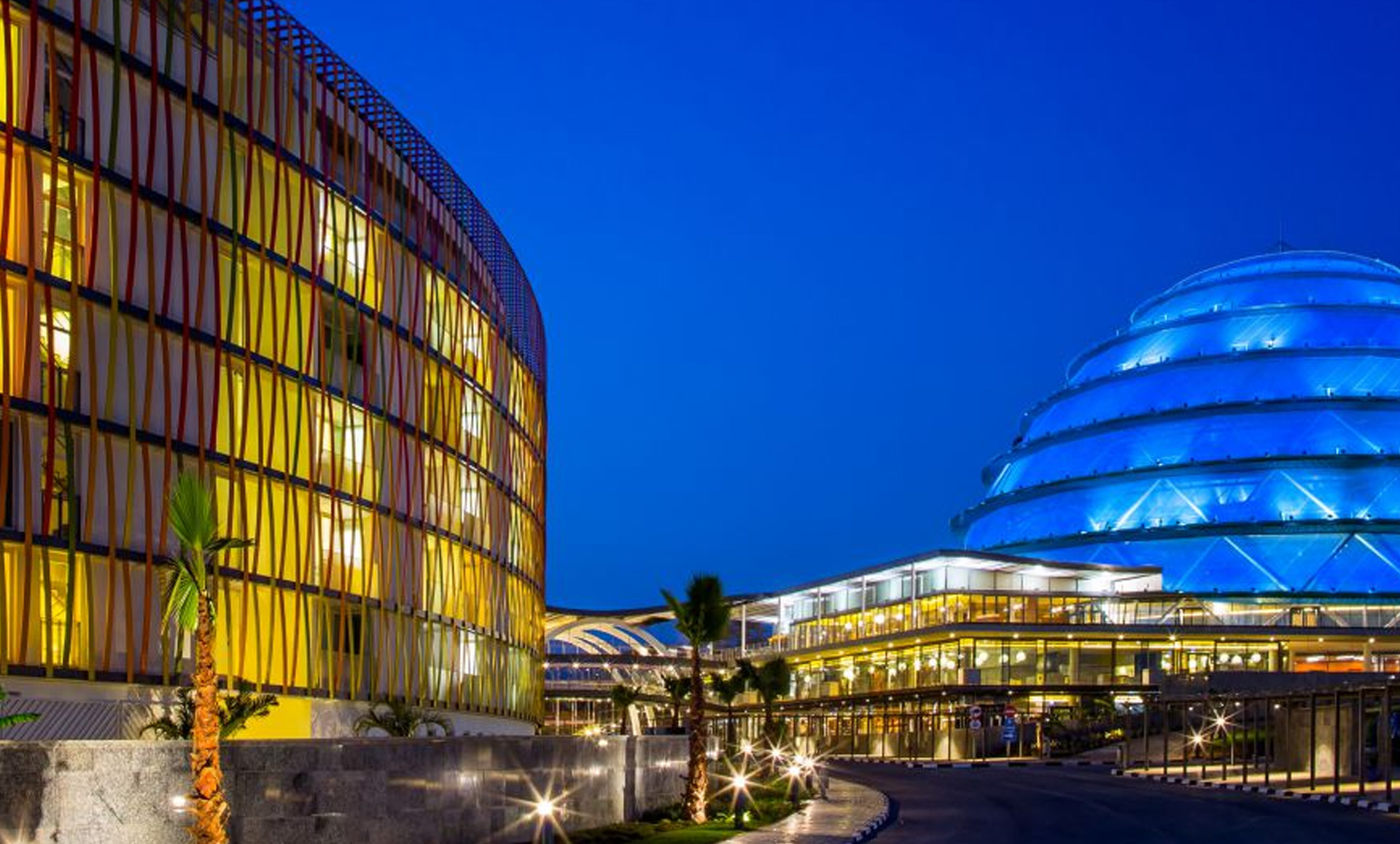
 Christine Nkulikiyinka, the Rwandan Ambassador to Norway, yesterday presented presented her letters of credence to King Harald V of Norway.
Christine Nkulikiyinka, the Rwandan Ambassador to Norway, yesterday presented presented her letters of credence to King Harald V of Norway.
 Vittus Qujaukitsoq, the foreign minister in the Greenlandic home-rule government, has postponed his visit to Norway which was to take place this weekend. Vittus was to take part in an international conference, Arctic Frontiers. The local news site Vísir reports that he made his decision due to the disturbing case of Birna Brjánsdóttir, a 20 year old Icelandic girl who disappearaed on Saturday morning. Two Greenlandic sailors are in custody in Reykjavík in connection to the case.
Vittus Qujaukitsoq, the foreign minister in the Greenlandic home-rule government, has postponed his visit to Norway which was to take place this weekend. Vittus was to take part in an international conference, Arctic Frontiers. The local news site Vísir reports that he made his decision due to the disturbing case of Birna Brjánsdóttir, a 20 year old Icelandic girl who disappearaed on Saturday morning. Two Greenlandic sailors are in custody in Reykjavík in connection to the case.
 The end of 2016 saw the NATO Archives fully implicated with events commemorating the 60th anniversary of one of the most important texts in the history of the Alliance. Approved by the North Atlantic Council on 13 December 1956, the Report on Non-Military Cooperation in NATO is a landmark document whose principle recommendations laid the foundation for NATO’s evolution toward increased political consultation amongst its Allies.
The end of 2016 saw the NATO Archives fully implicated with events commemorating the 60th anniversary of one of the most important texts in the history of the Alliance. Approved by the North Atlantic Council on 13 December 1956, the Report on Non-Military Cooperation in NATO is a landmark document whose principle recommendations laid the foundation for NATO’s evolution toward increased political consultation amongst its Allies.
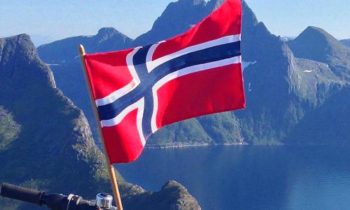 The Prime Minister of Norway, Erna Solberg, has hit back at claims that President-elect Donald Trump believes NATO is redundant, saying his demands are just the same as his predecessors’.
The Prime Minister of Norway, Erna Solberg, has hit back at claims that President-elect Donald Trump believes NATO is redundant, saying his demands are just the same as his predecessors’.
 A concrete triangle juts out of the side of a mountain in Svalbard, Norway. It could almost fade into the mountain when it’s covered in snow in the winter months or even when the artic desert is bare, save for the eerie bluish glow illuminating the entrance. It’s a doorway to the world seed vault.
A concrete triangle juts out of the side of a mountain in Svalbard, Norway. It could almost fade into the mountain when it’s covered in snow in the winter months or even when the artic desert is bare, save for the eerie bluish glow illuminating the entrance. It’s a doorway to the world seed vault.
 A Norwegian missile manufacturer announced plans Thursday to open a production facility for rocket motors and warheads at the Naval Surface Warfare Center Indian Head in Charles County, creating 130 jobs over the next five years.
A Norwegian missile manufacturer announced plans Thursday to open a production facility for rocket motors and warheads at the Naval Surface Warfare Center Indian Head in Charles County, creating 130 jobs over the next five years.
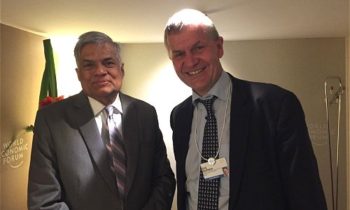 The United Nations Environment Programme (UNEP) has offered Sri Lanka its expert advice on a green economy and an environmentally friendly financial environment to promote health, wealth, and well-being of the island nation
The United Nations Environment Programme (UNEP) has offered Sri Lanka its expert advice on a green economy and an environmentally friendly financial environment to promote health, wealth, and well-being of the island nation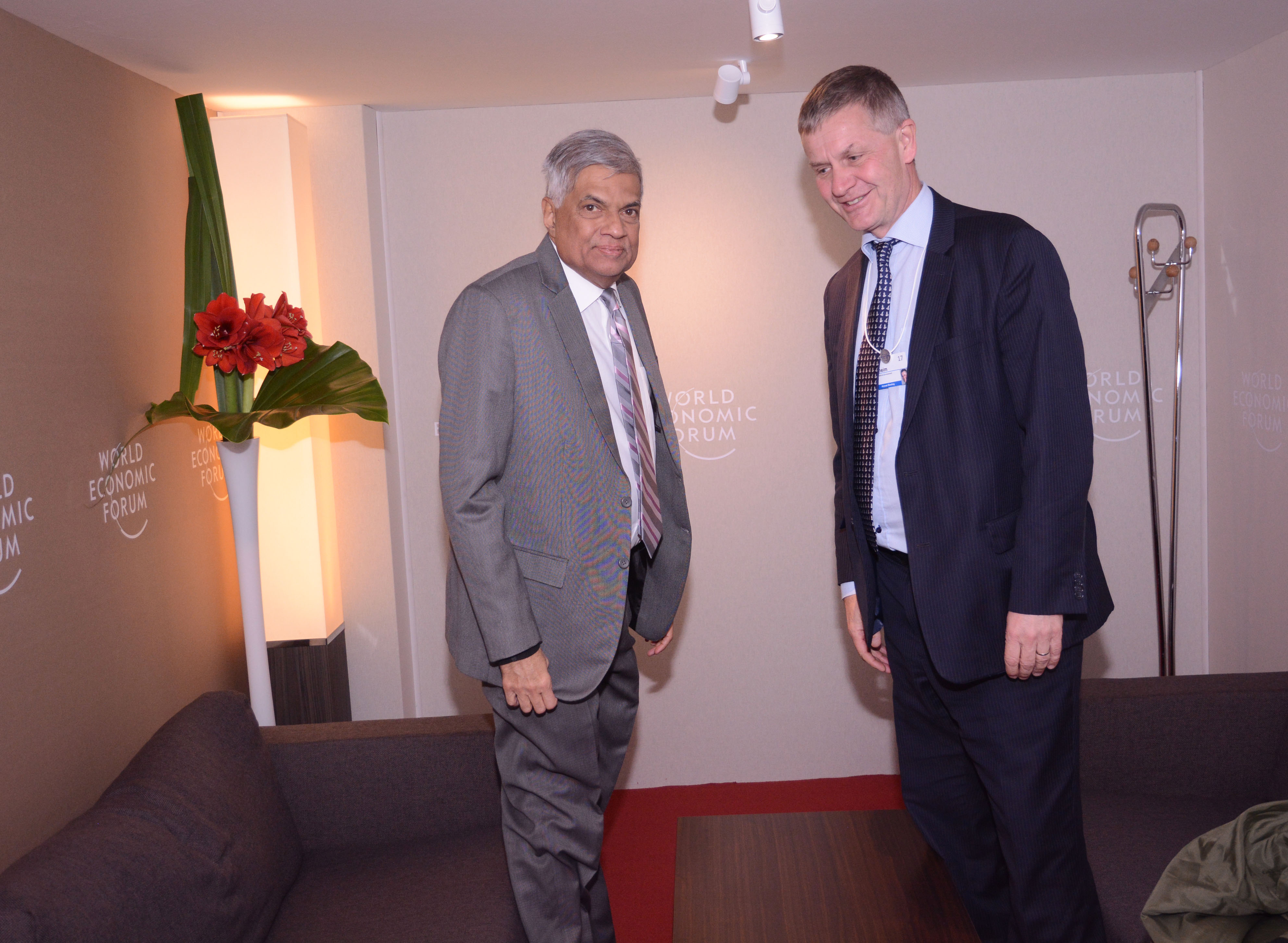
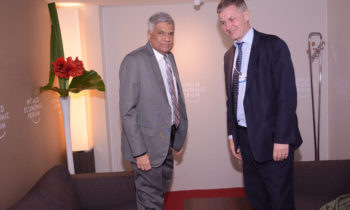 Sri Lanka is to work with former peace negotiator Erik Solheim once again, this time however on environmental issues.
Sri Lanka is to work with former peace negotiator Erik Solheim once again, this time however on environmental issues.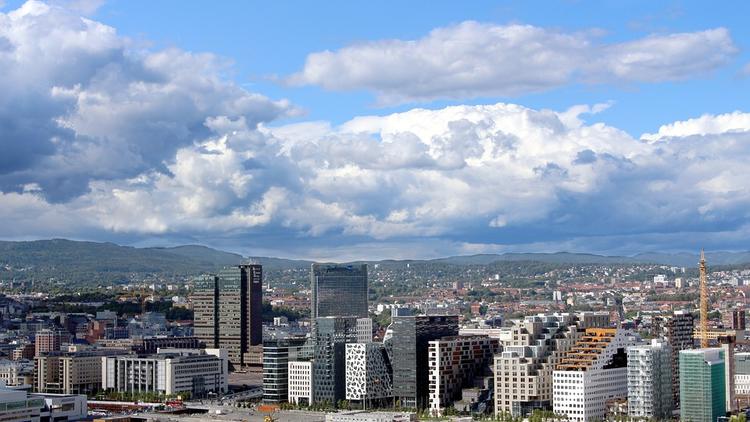
 A ban on driving most diesel cars on roads in the Norwegian capital of Oslo went into effect Tuesday in an attempt to tackle harmful air pollution.
A ban on driving most diesel cars on roads in the Norwegian capital of Oslo went into effect Tuesday in an attempt to tackle harmful air pollution.
 A force of some 300 U.S. Marines hit the ground in Norway on Monday, marking the second major American deployment near Russian borders this month.
A force of some 300 U.S. Marines hit the ground in Norway on Monday, marking the second major American deployment near Russian borders this month.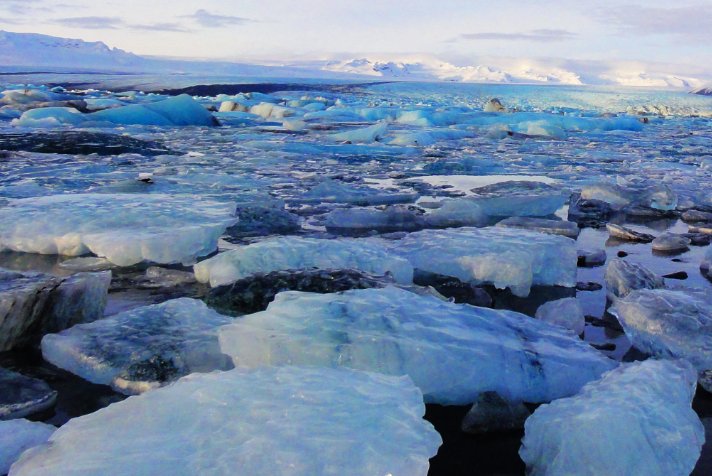
 The environment in the Arctic region is now changing significantly due to increased temperature, thinning and decrease of the sea ice, melting of the Greenland Ice Sheet, thawing permafrost and changes in atmosphere and ocean circulation.
The environment in the Arctic region is now changing significantly due to increased temperature, thinning and decrease of the sea ice, melting of the Greenland Ice Sheet, thawing permafrost and changes in atmosphere and ocean circulation.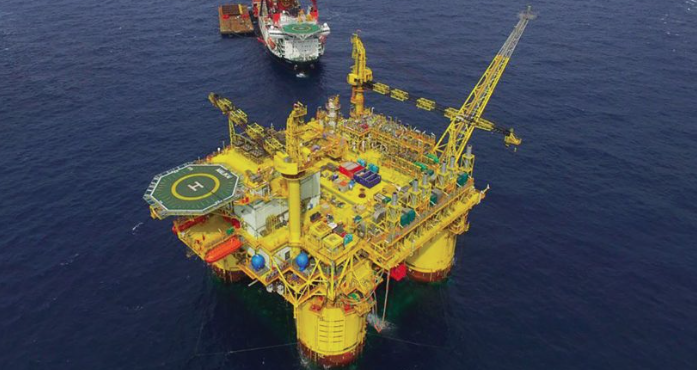
 The Petroleum Safety Authority (PSA) has given notice of an order to Eni Norge, asking the company to reassess its current plans, priorities, and use of resources for the Goliat field development in the Barents Sea.
The Petroleum Safety Authority (PSA) has given notice of an order to Eni Norge, asking the company to reassess its current plans, priorities, and use of resources for the Goliat field development in the Barents Sea.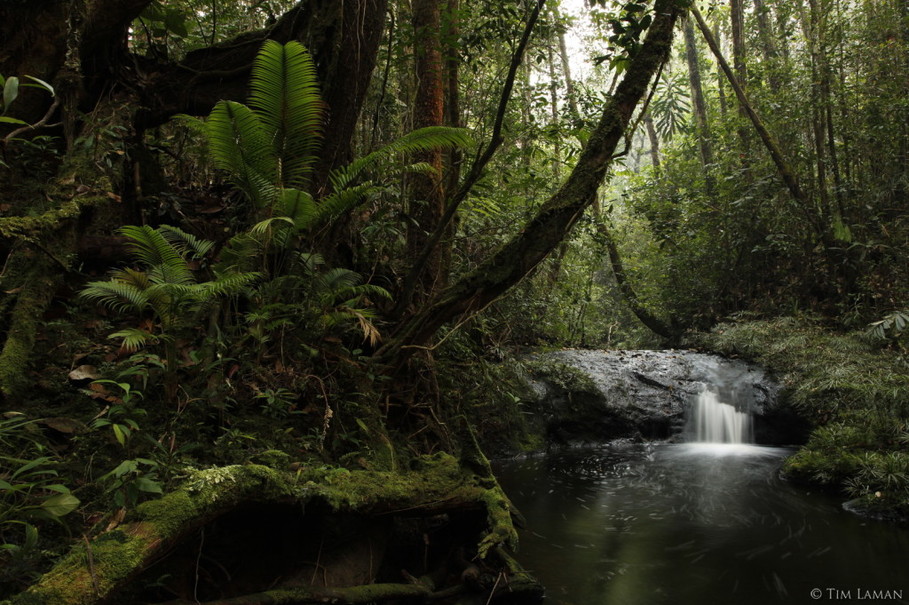
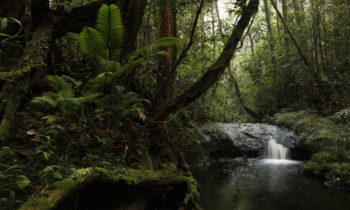 The Norwegian environment ministry and the government of West Sumatra will work together to save 2 million hectares of the province’s forests.
The Norwegian environment ministry and the government of West Sumatra will work together to save 2 million hectares of the province’s forests.
 Norwegian incumbent reorganises into four regional clusters with leaders reporting to group CEO Sigve Brekke.
Norwegian incumbent reorganises into four regional clusters with leaders reporting to group CEO Sigve Brekke.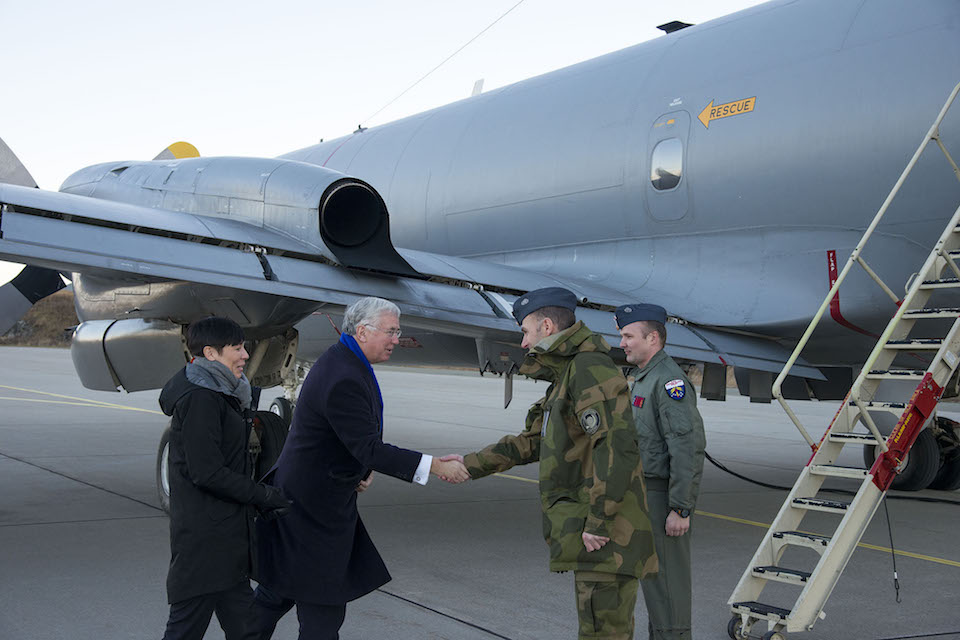
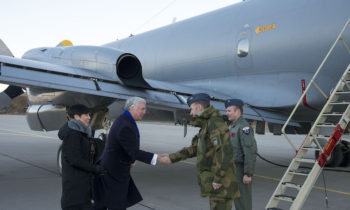 Norway’s decision to buy five P-8 maritime surveillance aircraft is the latest in a series of moves tying the NATO member closer to the UK and US, as top defense officials from the three countries seek to re-energize a maritime-surveillance alliance that had weakened in recent years.
Norway’s decision to buy five P-8 maritime surveillance aircraft is the latest in a series of moves tying the NATO member closer to the UK and US, as top defense officials from the three countries seek to re-energize a maritime-surveillance alliance that had weakened in recent years.